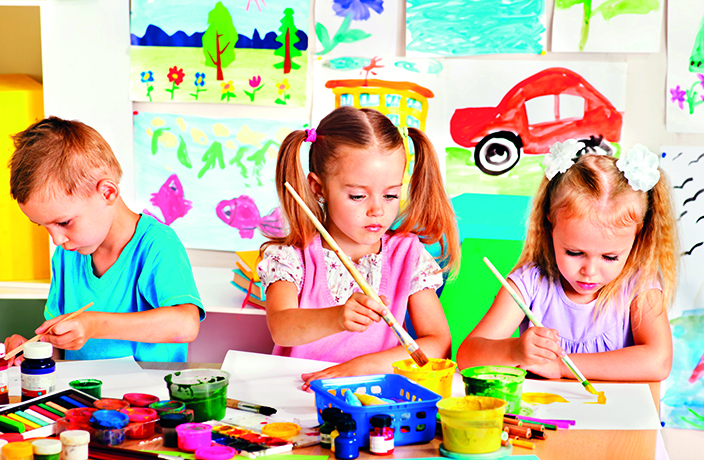How relevant is art to a child’s development and should we still make it a priority for our kids to master the subject?
At the beginning of a child’s academic career, it seems as if their entire day is spent engaging in nothing but art. My home is overflowing with art and crafts constructed by my two children and our evenings are filled with songs they’ve learned in school covering seemingly all that is important in life: sharing, washing hands, cleaning up and loving your family.
At some point, however, our educational institutions shift gears dramatically. Art and music are no longer embedded into the curriculum but placed apart from it. In high school, the arts are labeled as electives, separate from the main curriculum. Of course, the message this sends to both students and parents is that these are things to do in your spare time but not worthy of serious engagement.
So what is the purpose of art? Is it necessary? Would you be upset if your child came home from school and says, “Mom, Dad! Our school is canceling art class?”
A recent meta-analysis of the research regarding art and its impact on performance in other academic disciplines conducted by Harvard found that there are 11,467 articles, books, theses, conference presentations, technical reports and unpublished papers related to the academic value of art. So there is no shortage of effort put forth to investigate its utilitarian value.
However, the Harvard study found through their meta-analysis of all the data, that there were only three statistically significant causal links between art education and other disciplines.
“Drawing or painting won’t make your child smarter. It won’t help their SAT score and it won’t increase their reading fluency. But it will awaken them. It will prime them to experience all that life is and all it can be”
A medium-level causal relationship was found between listening to music and a temporary improvement in spatial-temporal reasoning. This is the so-called, ‘Mozart Effect’ – a concept that few people truly understand. Firstly, the increase in IQ is related to spatial temporal reasoning. Secondly, the effect is temporary. And thirdly, the effect is gained not simply via classical music, but listening to any style of music that heightens your mood.
A second area where a medium-level causal relationship found by the comprehensive Harvard study was between learning an instrument and spatial reasoning. The third area where a causal link, albeit weak, could be established was between drama and verbal skills. Students who participated in acting had greater verbal skills than those who did not.
Yet, you’ll notice that of the 11,467 pieces of research, no statistically significant relationship could be established between traditional art (non-musical and non-dramatic) and academic performance. In fact, the Harvard study explicitly stated that no relationship could be found between the arts and verbal intelligence, math scores, reading, non-verbal reasoning or even creativity.
So where does this leave us? Does this mean that art is unworthy of our children’s time? Should art teachers be fired and replaced by additional mathematics and reading specialists? What good is art in school if it does no academic good?
I think the problem in our society is that we tend to evaluate things based on utility. The astute reader would have noticed that much of the research on art and its cognitive impact has to do with its instrumentality in regard to other areas of academics. And as the famous English art critic John Ruskin wrote, “The most beautiful things in the world are the most useless; peacocks and lilies, for example.” Instead of assessing the value of art-based on its instrumentality, we should change our evaluative paradigm.
The arts may lack academic instrumentality but they do not lack emotional and spiritual utility. In his famous work, Art as Experience, American philosopher John Dewey beautifully wrote, “Only when the past ceases to trouble and anticipations of the future are not perturbing is a being wholly united with his environment and therefore fully alive.”
The aesthetics awake us. This is a particularly insightful and useful view of the arts given that the word ‘aesthetic’ itself is derived from the Greek word θɛtɪk, which means to awaken the senses. By viewing the arts in this way, we cease to evaluate their usefulness based on some secondary benefit. We cease to evaluate them as a means to an end, but change our view of the arts, and our subsequent evaluation of the worth of their pursuit, as an end in itself.
When I asked my seven-year-old daughter why she enjoyed art in school, she said, “It makes me calm. When you’re finished, you’re so proud of yourself. You can make anything in art – it is everything.”
Drawing or painting won’t make your child smarter. It won’t help their SAT score and it won’t increase their reading fluency, but it will awaken them. It will prime them to experience all that life is and all that it can be. Viewed through this paradigm, art is everything.
Matt Kuykendall teaches the leaders of tomorrow about neuroscience, human behavior and other big ideas at Shanghai American School’s Puxi campus.

















